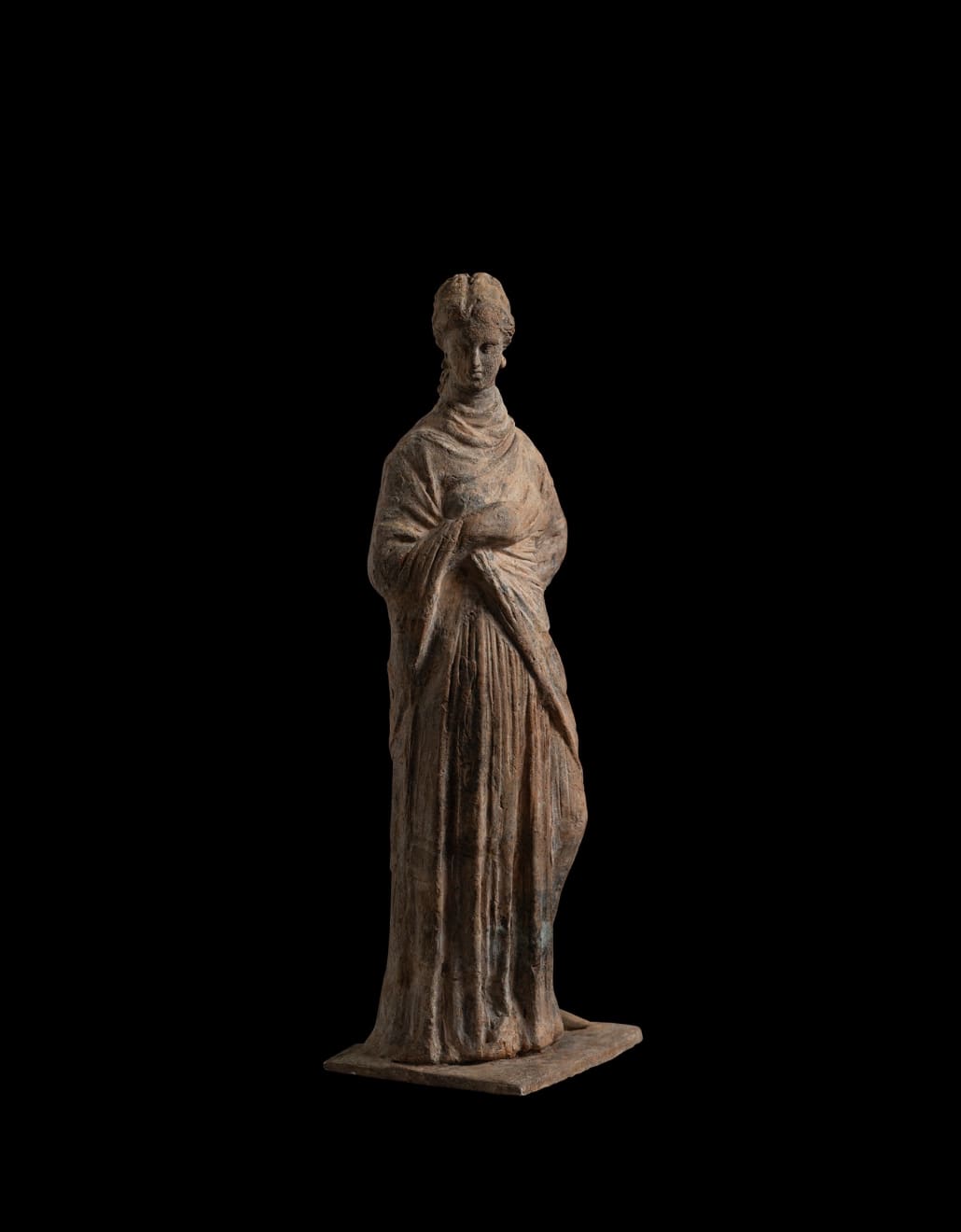Greek
A Greek terracotta draped female figure, circa 4th - 3rd century BC
Terracotta
Height: 27.7 cm
Further images
The statuette represents a young woman dressed in a long chiton, over which she wears a large, loosely-draped himation that covers her arms and hands. Her right leg supports her...
The statuette represents a young woman dressed in a long chiton, over which she wears a large, loosely-draped himation that covers her arms and hands. Her right leg supports her weight, and her left leg is bent with her foot just visible under the hemline of her chiton. Her left arm is folded and placed on her hip, while her right rests across her chest. Her head and gaze is turned down towards her right. Her wavy centrally parted hair is pulled back into an elaborate bun, which rests on the nape of her neck. The figure is wearing earrings and stands on a flat terracotta base.
Provenance
Dr Marcel Lanselle Collection, France, acquired circa 1930With David Ghezelbash, Paris
Private collection, London, UK, acquired from the above in 2011
Literature
Such figures are generally referred to as 'Tanagra' figurines after the most famous findspot, Tanagra in Boeotia, Greece. However statuettes of this type have also been found at other sites in the ancient world, including Myrina and Smyrna in Asia Minor. The most common forms of the statuettes depict young women sitting, standing, or in the process of graceful movement. The statuettes were used as grave offerings, votives, decorative objects, and perhaps toys. The hair, clothing, skin, and jewellery of the figures were originally painted.For a similar figure see, R. Higgins, Tanagra and the Figurines, London, 1987, p. 138, no. 166A.





